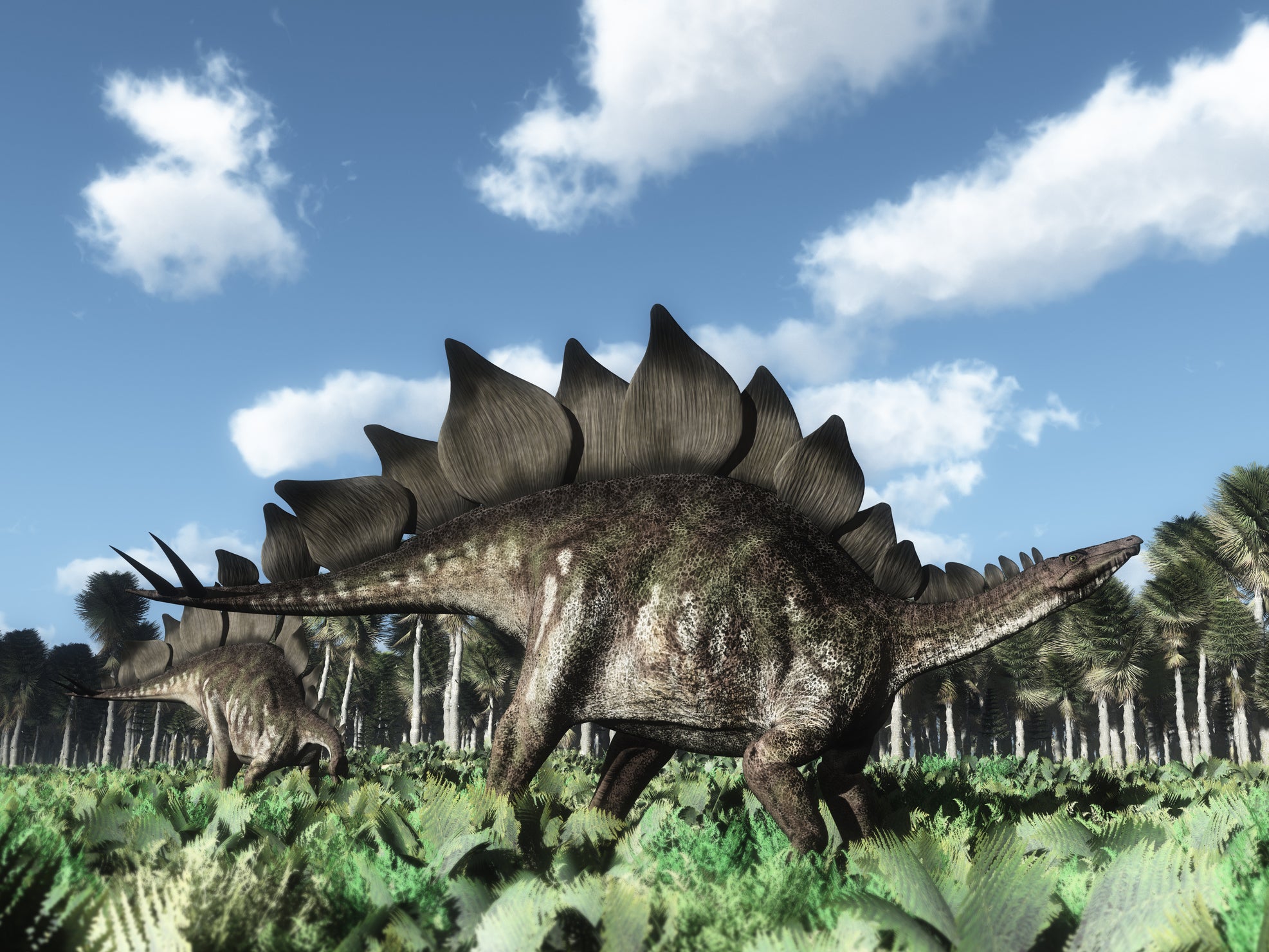New species of stegosaur is oldest ever discovered, scientists say
Creature believed to have walked the earth 168 million years ago

Your support helps us to tell the story
From reproductive rights to climate change to Big Tech, The Independent is on the ground when the story is developing. Whether it's investigating the financials of Elon Musk's pro-Trump PAC or producing our latest documentary, 'The A Word', which shines a light on the American women fighting for reproductive rights, we know how important it is to parse out the facts from the messaging.
At such a critical moment in US history, we need reporters on the ground. Your donation allows us to keep sending journalists to speak to both sides of the story.
The Independent is trusted by Americans across the entire political spectrum. And unlike many other quality news outlets, we choose not to lock Americans out of our reporting and analysis with paywalls. We believe quality journalism should be available to everyone, paid for by those who can afford it.
Your support makes all the difference.A new species of one of the most recognisable types of dinosaur is also the oldest of its kind ever discovered, British scientists believe.
Remains of a stegosaur, a dinosaur made famous through the Jurassic Park films, were studied by a team from the Natural History Museum and belong to a new genus which walked the earth around 168 million years ago.
Stegosaurs are armoured dinosaurs recognisable by spike-like bones protruding from their spine and tails.
Despite the specimen including only a few vertebrae and an upper arm bone, scientists concluded it was a new species and genus which dates to the middle Jurassic period – much earlier than most known stegosaurs.
The team, led by Dr Susannah Maidment, named it Adratiklit boulahfa, meaning “mountain lizard” in the Berber language.
Boulahfa is a reference to the locality in the Middle Atlas Mountains of Morocco where the specimen was found.
“The discovery of Adratiklit boulahfa is particularly exciting as we have dated it to the middle Jurassic,” said Dr Maidment. “Most known stegosaurs date from far later in the Jurassic period, making this the oldest definite stegosaur described and helping to increase our understanding of the evolution of this group of dinosaurs.”
The specimen is the first stegosaur, a thyreophoran dinosaur, to be found in North Africa.
Thyreophoran dinosaurs are found across much of the globe and have been mainly attributed to Laurasian rock formations, the team explained.
This has suggested that when the earth was divided into two supercontinents, Laurasia and Gondwana, thyreophorans were more common and diverse in Laurasia. But the recent discovery could dispute that.
Dr Maidment added: “Most stegosaurs we know of, including the Natural History Museum’s Sophie, the most complete stegosaur discovered, have been found in Laurasian rock formations.
“This, however may not mean that stegosaurs were not so common in Gondwana and in fact may be due to the fact that Gondwana rock formations have been subject to far fewer excavations and detailed studies.”
The team said the discovery adds to the theory the Gondwanan fossil record of armoured dinosaurs is significantly biased by geological factors and collection efforts.
Dr Maidment said: “What is exciting about this is that there could be many more thyreophoran dinosaurs to find in places that until now have not been excavated.”
Further discoveries in the region will provide an improved view of the distribution of this group of dinosaurs and could result in a more complete specimen of Adratiklit boulahfa, the team said.
Press Association
Join our commenting forum
Join thought-provoking conversations, follow other Independent readers and see their replies
Comments